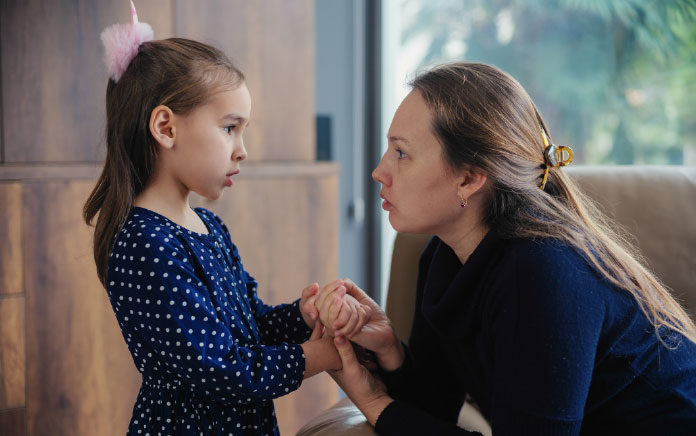As parents, there are several conversations you need to have with your child – the concept of ‘privates’ and inappropriate touching being an important one. This could be a tough subject to approach, but parenting columnist, Ouiam El Hassani, tells us how to address it in a way that your child fully understands the concept and is able to keep themselves safe.
As they say, knowledge is power, right? And as parents, we teach our children about water safety and road safety. We make sure they wear their life vests; know that they must hold our hands and look both ways before crossing the street, and to never touch a hot stove. But are we taking the time to incorporate body safety into our parenting conversations?
I understand, it’s an intimidating topic to discuss. What should I say? How should I say it? I can’t even imagine anything bad happening to my child—it’s too scary to think about! These thoughts are common, but avoiding the conversation won’t do anyone any good. Keeping an open line of communication can make a world of difference in your child’s life.
 Body safety skills can be taught throughout your child’s life by including the topic as part of daily conversations. Here are seven steps you can follow:
Body safety skills can be taught throughout your child’s life by including the topic as part of daily conversations. Here are seven steps you can follow:
- Teach your children the proper names of their body parts.
As soon as your child begins to talk, name each body part correctly including the genitals. Explain to your child that their ‘private parts’ are the parts under their bathing suit. Note that a child’s mouth is also known as a ‘private zone’. Avoid the use of pet names to describe the genitals. This way, if a child is touched inappropriately, they can clearly state where they were touched. - Make sure there is a clear understanding of the word ‘private’.
Explain the terms ‘private’ and ‘public’ and stress the fact that ‘private’ means ‘just for you’. To create a correlation, you could perhaps share an example of how a toilet is a private place, exclusive to you when in use, but the kitchen is a public space because it is shared. Relate these terms to both spaces and body parts. - Explain to your child who they should talk to if they feel unsafe.
Teach your child that no one has the right to touch or ask to see their private parts, and if someone does, they must tell a trusted adult straightaway. As your child becomes older (3+ years) help them to identify three to five trusted adults that form their ‘Safety Network’ who they understand that they could tell anything to and they would be believed. - Make sure they have a clear understanding of safe vs. unsafe.
Talk with your child about the feeling ‘safe’ and ‘unsafe’. Discuss times when your child might feel ‘unsafe’, for instance if they are being pushed down a steep slide; or ‘safe’ when they are snuggled up on the couch reading a book with you. It is important children understand the different emotions that are associated with feeling safe and unsafe. - Discuss what it feels like to feel unsafe.
Discuss your child’s early warning signs when they feel unsafe, i.e. heart racing, feeling sick in the tummy, sweaty palms, etc. Let them come up with some ideas of their own. Tell your child that they must tell you or a person in their ‘Safety Network’ if any of their early warning signs occur. Reinforce that you will always believe them and that they can tell you anything. - Discourage keeping secrets.
Instead, talk about ‘happy surprises’ such as not telling Granny about her surprise birthday party. Compare this with ‘unsafe’ secrets such as someone touching their private parts. Make sure your child knows that if someone does ask them to keep an unsafe secret that they must tell someone in their ‘Safety Network’ straightaway. - Empower your child to speak up if something feels wrong.
Discuss with your child when it is appropriate for someone to touch their private parts; for instance, a doctor when they are sick (but making sure they know you must be in the room). Explain that if someone does touch their private parts (without you there) that they have the right to firmly say, “No!” or “Stop!” and outstretch their arm and hand.
 Reinforce to your child that they are the ‘boss of their body’ and they do not have to kiss or hug a person if they don’t want to. Explain that we all have a ‘body boundary’ This is an invisible space that surrounds our body, and that no one can enter another person’s body boundary unless they allow it.
Reinforce to your child that they are the ‘boss of their body’ and they do not have to kiss or hug a person if they don’t want to. Explain that we all have a ‘body boundary’ This is an invisible space that surrounds our body, and that no one can enter another person’s body boundary unless they allow it.
While this may be a tough topic for you to approach with your child, make sure you take the time to have it, as often as you need to, to protect the wellbeing of your child.





































